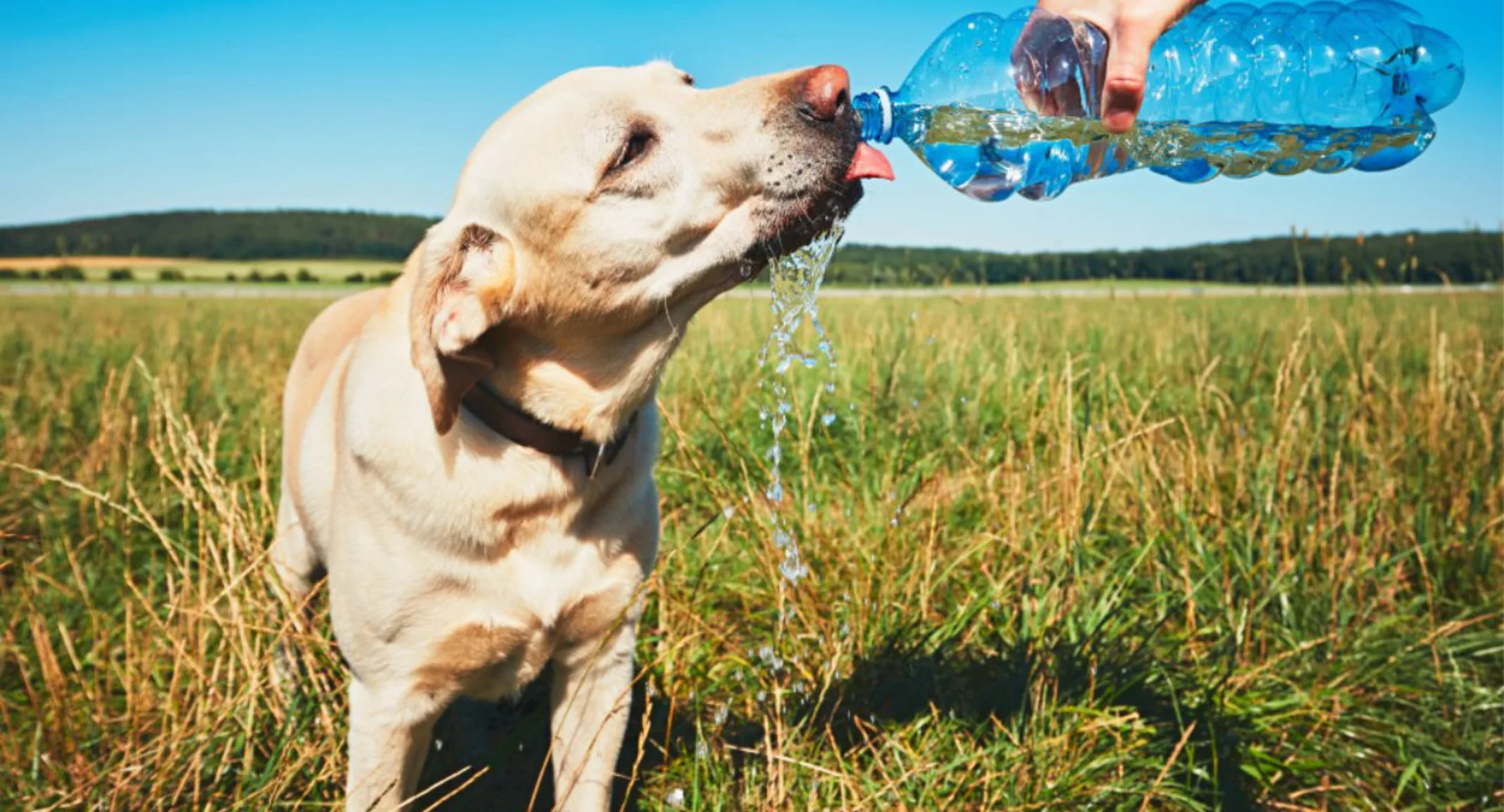The Dangers Of Heat Stroke For Pets
General

The dog days of summer are upon us, and even a short time outside in these high temperatures can turn into a life-threatening emergency for your pets. Heat stroke is a serious condition that can lead to organ failure, seizures, bleeding disorders, and death – and it can happen extremely fast. Continue reading to learn about the dangers of heat stroke for pets.
CASE OVERVIEW
Groot, a 3-year-old American Staffordshire Terrier, was treated for severe heat stroke after the air conditioning in his home was accidentally turned off. When his owners found him, they did the right thing by cooling him off with room-temperature water and bringing him straight to our 24/7 emergency service in Richmond. Although his body temperature had normalized by arrival, Groot was showing signs of heat stroke injury. Signs of heat stroke may include abnormal behavior, high heart rate, low blood pressure, rapid breathing, difficulty walking, lack of coordination, bruising on the belly, bleeding from the gums, or bloody diarrhea.
Shortly after he was brought to the hospital, Groot started having seizures and displaying other signs of brain injury including temporary blindness. His bloodwork showed prolonged blood clotting times, low platelet cell numbers, and damage to his kidneys – all common complications of heat stroke. Groot was hospitalized at VVC Richmond for three days under the care of our Critical Care Specialist, Dr. Honious.
Groot and Critical Care Specialist, Dr. Heather Honious.
While hospitalized, Groot developed signs of a blood clotting disorder known as disseminated intravascular coagulopathy (DIC). DIC is a condition in which small blood clots develop in the bloodstream, blocking small blood vessels. This increased clotting depletes platelets and clotting factors that are needed to control bleeding and can often cause excessive bleeding. Groot also developed acute kidney failure. Both serious conditions have a guarded prognosis. To help try to save his life, Groot was given two blood plasma transfusions as well as IV fluids, antibiotics, and anti-seizure medications.
Our Critical Care team carefully monitored of his blood pressure, blood clotting times, and organ function. Luckily, Groot responded to his treatment – he regained his vision and his kidneys began to start functioning normally again. He was sent home with his loving family and is expected to make a full recovery.
WHAT IS HEAT STROKE?
Heat stroke – or severe hyperthermia – is defined as a rise in body temperature above 104.9° F and is a life-threatening emergency. Heat stroke can occur quickly when animals are exposed to areas with high heat and humidity or limited ventilation, such as cars, dog houses, or patios. Temperatures in a car even with the windows cracked can exceed 120° F in a matter of minutes when the outside temperature is as low as 75° F, and death can occur within an hour.
Certain dog breeds, particularly flat-faced breeds like pugs or bully breeds, double-coated dogs, or dogs with pre-existing conditions like advanced age, obesity, or respiratory disease, are particularly susceptible to heat stroke injury. Because dogs and cats cannot sweat, they rely on the evaporation of moisture during panting as their primary method of cooling. When it is hot and humid, that evaporation happens at a much lower rate and it is very difficult for dogs and cats to cool down.
Once the body temperature is elevated, the body attempts a last-ditch effort to cool itself. Blood vessels in the skin and the extremities become dilated to try to maximize heat loss through the skin. The heart works harder to try to maintain blood pressure but eventually is unable to keep up. Blood pressure drops and less blood is delivered to vital organs like the heart, kidneys, intestines, and liver, leading to multiple organ failures over time. Essential proteins are damaged by heat, which creates a chain reaction of tissue damage and inflammation. Blood vessels become leaky and prone to clotting disorders. Massive bleeding can occur when the blood clotting system becomes disrupted. Once multiple organs are showing signs of damage, the prognosis for survival becomes grave.
Treatment is made up of two parts: cooling down the pet and treating the complications like bleeding and organ failure. If you suspect your pet may be overheated, or if they are exhibiting any of the signs of heat stroke, we recommend taking immediate action.
WHAT ARE THE SIGNS OF HEAT STROKE?
Some of the most common signs of heat stroke are:
Excessive panting and/or drooling
Physical exhaustion or unwillingness/unable to move
Lack of coordination
Elevated body temperature
Vomiting or diarrhea
Seizures
Bright red, purple, or gray/blue gums
Dizziness
WHAT TO DO IF YOU NOTICE SIGNS OF HEAT STROKE
It is important to immediately remove your pet from the hot/warm/humid area. Take efforts to cool your pet down with cool (not cold!) water and ensure that they have access to air conditioning, fans, and ample airflow. Once your pet’s temperature drops to 103° F, immediately cease cooling efforts and reach out to your veterinarian so that your pet can receive medical attention as soon as possible. Once at the hospital, your veterinarian will perform diagnostics including blood work to determine the extent of the damage and recommend hospitalization for IV fluids and monitoring. Heat stroke is a serious and sometimes fatal condition, but with rapid recognition and prompt intensive treatment, we can provide your pet with the best chance of a full recovery.
If you believe your pet may be overheated or suffering from a heat-related injury, please our emergency services are available to help. Contact us right away:
Fredericksburg (540) 372-3470 Midlothian (804) 744-9800 Richmond (804) 353-9000
